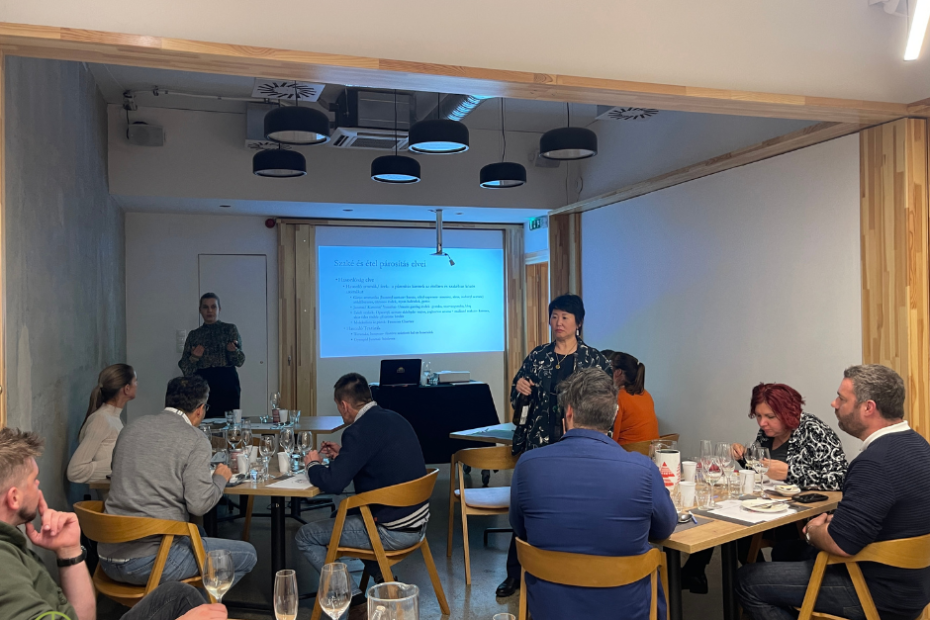On 13 November, after the hyuganatsu citrus fruit and premium, A5 class wagyu, we discovered another layer of Japanese cuisine at a private event at Culinary Institute of Europe. This time we were immersed in the world of sake with our guests, learning about the productions process, characteristics and different varieties of the iconic Japanese drink, while tasting premium quality sakes straight from Japan. The drinks were accompanied by Hungarian dishes with harmonious flavours.
This evening’s introduction to the surprisingly diverse and hitherto unexplored world of Japanese sake was sommelier Anna Juhász, formerly of the three Michelin-star restaurant The Fat Duck and currently a wine and sake sommelier teacher at the Central European Wine Institute. The audience included CIE students, chefs, journalists and, to our great pride, the Japanese Ambassador.

The evening began with a comprehensive and informative presentation of the sake and its production, followed by the main attraction that everyone was waiting for: a total of seven different sakes, each with a distinct character, were tasted, demonstrating the versatility of the beverage. During the tasting, the sommelier told us about the master chefs who made each of the different types of sake, explained the flavours that could be found in the drinks and gave us some guidance on the types of dishes that would go best with each.

The aim of the event was not only to introduce the sake to the guests, but also to show that Japanese drinks can also accompany Hungarian dishes, so each sake was served with food. The dishes were prepared by chef Ádám Garai, who has was apprentice in renowned restaurants such as Geranium, Ikarus and Pierre Gagnaire, before working as head chef in Hokkaido, Japan.

Seven sakes – seven Hungarian dishes
The food and drink pairings were created as in the case of the wine pairings to accompany the menu, the aim was to create a harmonious unity between drinks and dishes.
We started the evening with the Yamahai Miyamanishiki Vintage 2018 sake, which we paired with an almond, parmesan cheese, dried fruit, Serrano ham plate as an amuse bouche. Once the taste buds had warmed up, we followed with the Chikuha Noto Beef Junmai sake from organic farming, which works particularly well with beef dishes, so we served Hungarian beef tartare as a starter.

This was followed by the Chikuha Oyster sake, which has complex acidity from the wine yeast, including malic acid, citric acid and succinic acid, making it a perfect match for oysters, but we accompanied it with Baja-style chowder. We served the fresh-tasting sparkling sake of Shishi no Sato Sen Sparkling Junmai Ginjo Nama with barley pearl porridge and porcini mushrooms. The Kamoizumi Junmai Daiginjo sake also a good pairing with meats, and was served with bloody sausage and sauerkraut, as did the Tamagawa Time Machine, which has a special feature of rich sweetness that quickly permeates and lingers.

For dessert, the chef chose an iconic Hungarian delicacy, cottage cheese noodles with sour cream and poppy seeds, accompanied by Tsurubai Yuzu sake. Its uniqueness lies in the fact that the yuzu fruit is pressed into the drink with its peel, thus retaining its intense flavour and acidity. To finish the meal, guests were served figs and blue cheese to accompany their favourite sake.

Even if only in our imagination, for these two hours we were able to travel through Japan’s diverse landscapes, rice fields and got a glimpse behind the scenes of the sake workshops. It was a night to remember for us and our guests!


